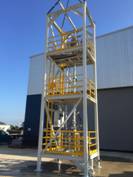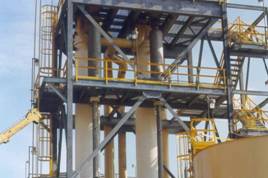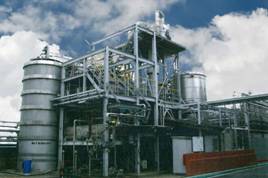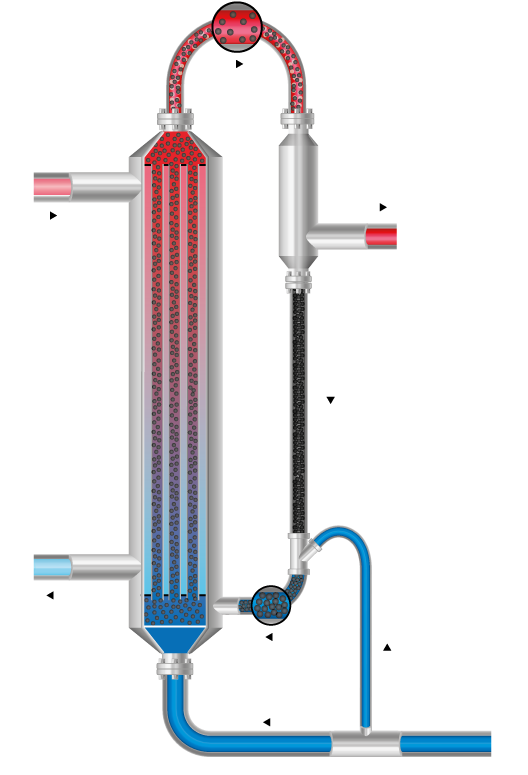
Self-Cleaning Heat Exchangers
The self-cleaning shell and tube heat exchangers apply the circulation of solid particles through the tubes to remove fouling deposits from the tube wall.
Klaren International - Self-Cleaning Heat Exchangers
|
Self-cleaning heat exchangers for zero-fouling operation
The self-cleaning shell and tube heat exchangers apply the circulation of solid particles through the tubes to remove fouling deposits from the tube wall.
1. A self-cleaning configuration for (extremely) severe fouling applications makes zero-fouling operation possible
2. Retrofit of existing conventional exchangers into a configuration which applies the KLAREN self-cleaning technology on an intermittent or continuous basis
3. New exchangers can be designed in such a way that the KLAREN self-cleaning technology can be added at a later stage if fouling proves to be more severe than originally anticipated
Principle
The self-cleaning heat exchanger technology, developed by Klaren International, can be applied in most vertically oriented shell and tube exchangers. The fouling prone fluid, stream one in figure 1, that flows upward inside the tubes, is charged with solid particles that are swept upward with the fluid producing a scouring action on the walls of the tubes as they travel. A distribution system in the inlet channel provides a uniform distribution of liquid and particles into all the tubes. From the outlet channel the particles are carried to the separator where they disengage from the liquid and are returned through the external down comer into the control channel and from there through the connecting line between control channel and inlet channel into the inlet channel. The flow of particles is activated by the control liquid flow, which is a fraction of the total liquid flow supplied to the exchanger. By changing the control liquid flow, the intensity of the cleaning action can be varied. If desired the cleaning can also be applied intermittently.
For more information please see: www.KlarenBV.com
Applications
-
Forced circulation evaporators and reboilers
Chemical processes were heating or cooling causes polymerization fouling, or resinous deposits
Heat recovery from fouling wastewaters
Process cooling with hard scaling and/or biologically fouled water
White water and black liquor heating in the pulp and paper industry
Raw juice heating in the food processing industry
Heating of geothermal brines
Brackish and seawater desalination
Temperature controlled cell disruption in the biotech industry
Retrofit:
-
Forced circulation reboilers (Thermosyphon reboilers would have to be converted to forced circulation type reboilers for retrofitting)
-
Forced circulation evaporators
-
Long tube vertical evaporators
-
Short tube vertical evaporators
-
Heating applications that foul
-
Cooling applications that operate near the melting point of one of the chemical components in a mixture
Questionnaire
Please call for further information
R.C. Costello & Assoc., Inc.
1611 S. Pacific Coast Highway, Suite 302
Redondo Beach, CA 90277
Tel: (310) 792-5870, Fax: (310) 792-5877
E-MAIL: rcca[at]rccostello.com




